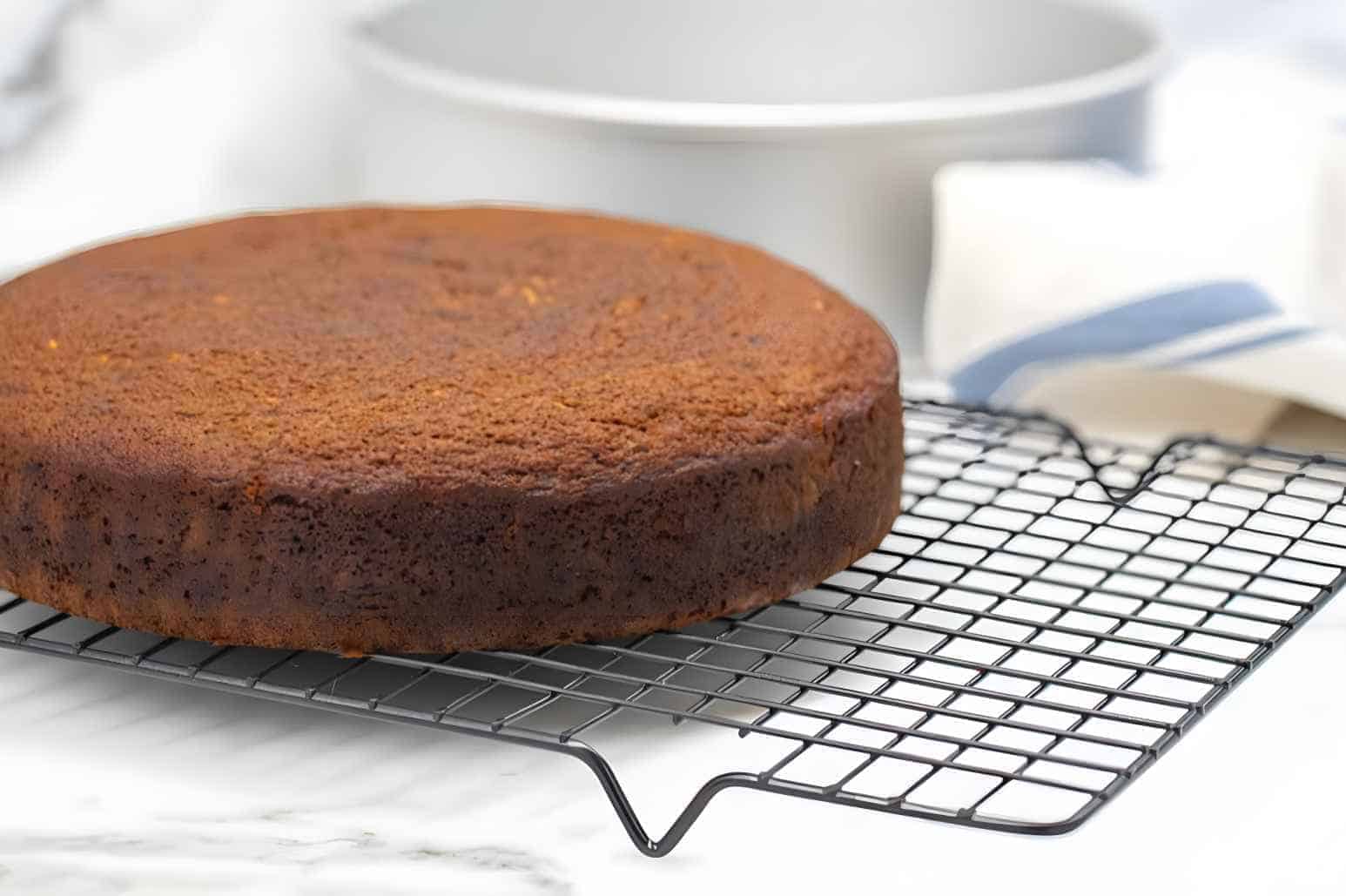Have you ever baked a cake and couldn’t wait to dig in as soon as it came out of the oven? We’ve all been there! But did you know that letting your cake cool properly is crucial for its texture, flavor, and overall quality? Learn more and read some tips on how to cool cake.
Why Is It Important to Let a Cake Cool?
After baking, cakes continue to cook from the residual heat left inside. If you cut into a cake before it has cooled completely, you risk disrupting the cooking process and ending up with a dense and gummy cake. Proper cooling allows the cake to set, stabilize, and achieve its desired texture and structure.
Cooling lets the cake release steam, preventing it from becoming too moist and sticky. It also helps the flavors to develop and deepen, making for a tastier and more enjoyable cake.
What Happens if You Don’t Let It Cool Properly?
Rushing the cooling process or skipping it altogether can have a detrimental effect on your cake. It can cause the cake to collapse, become dense, and stick to the pan. It can also cause the icing to melt and slide off the cake.
Skipping the cooling process can lead to an unpalatable and disappointing result. We know you don’t want to ruin important celebrations with a messy cake, so cool it first.
Factors Affecting Cooling Time
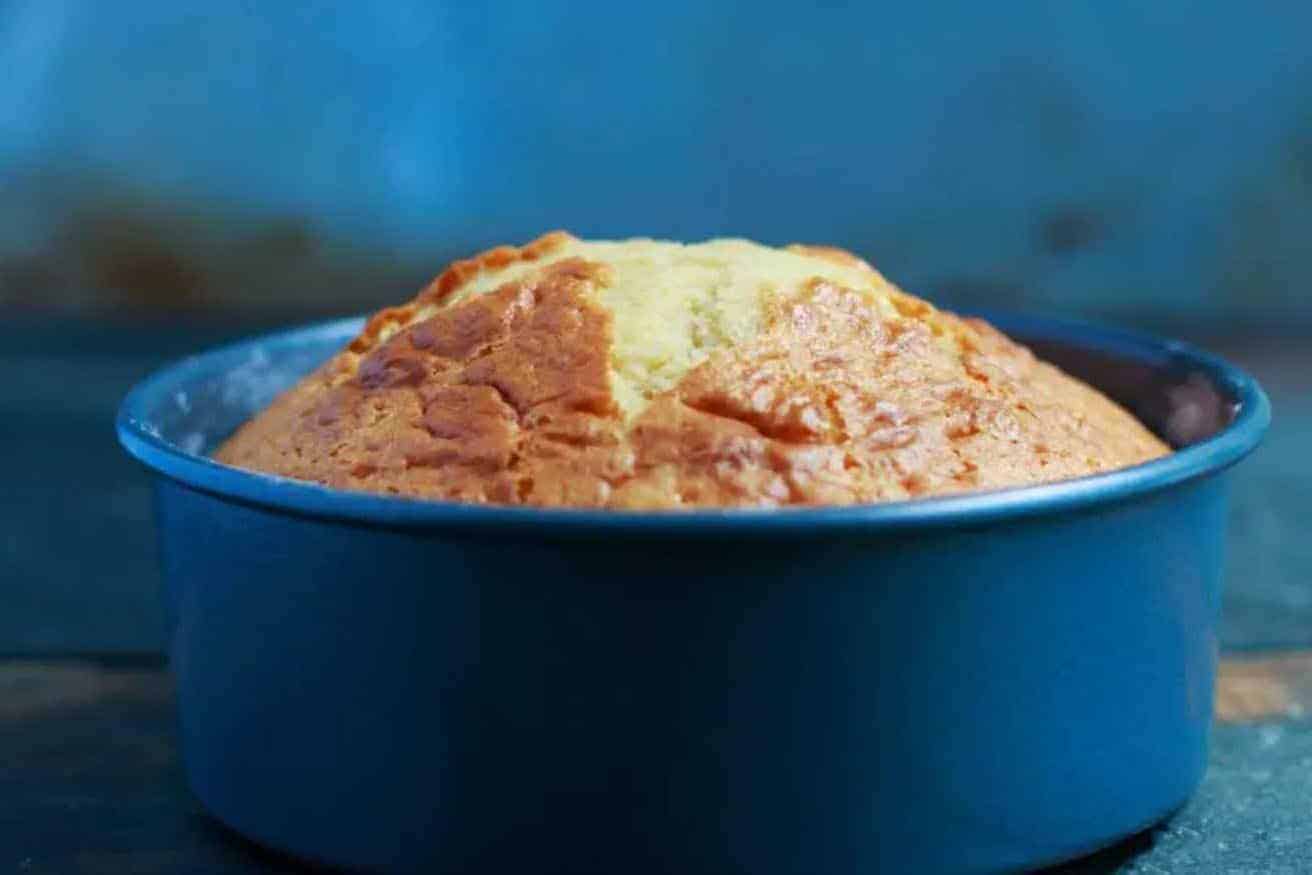
The cooling time for your cake will depend on various factors, such as the size and shape of the cake, the type of pan used, and the oven temperature.
A larger cake or one baked in a deep pan will take longer to cool than a smaller one baked in a shallow pan. A higher oven temperature will also require a longer cooling time.
Different Methods of Cooling
There are several methods of cooling your cake, each with advantages and disadvantages.
- Room Temperature: This method involves leaving the cake to cool in the pan at room temperature. It is the most common and straightforward method but also the slowest, taking up to two hours.
- Refrigeration: Refrigerating your cake can speed up the cooling process, taking about 30 minutes to an hour. However, it may cause the cake to dry out if left in the fridge for too long.
- Freezing: Freezing your cake is the fastest, taking only 15-20 minutes. It also helps to lock in moisture and prevent the cake from drying. However, it can make the cake more complex to handle and decorate.
Cooling Time for Different Types of Cakes
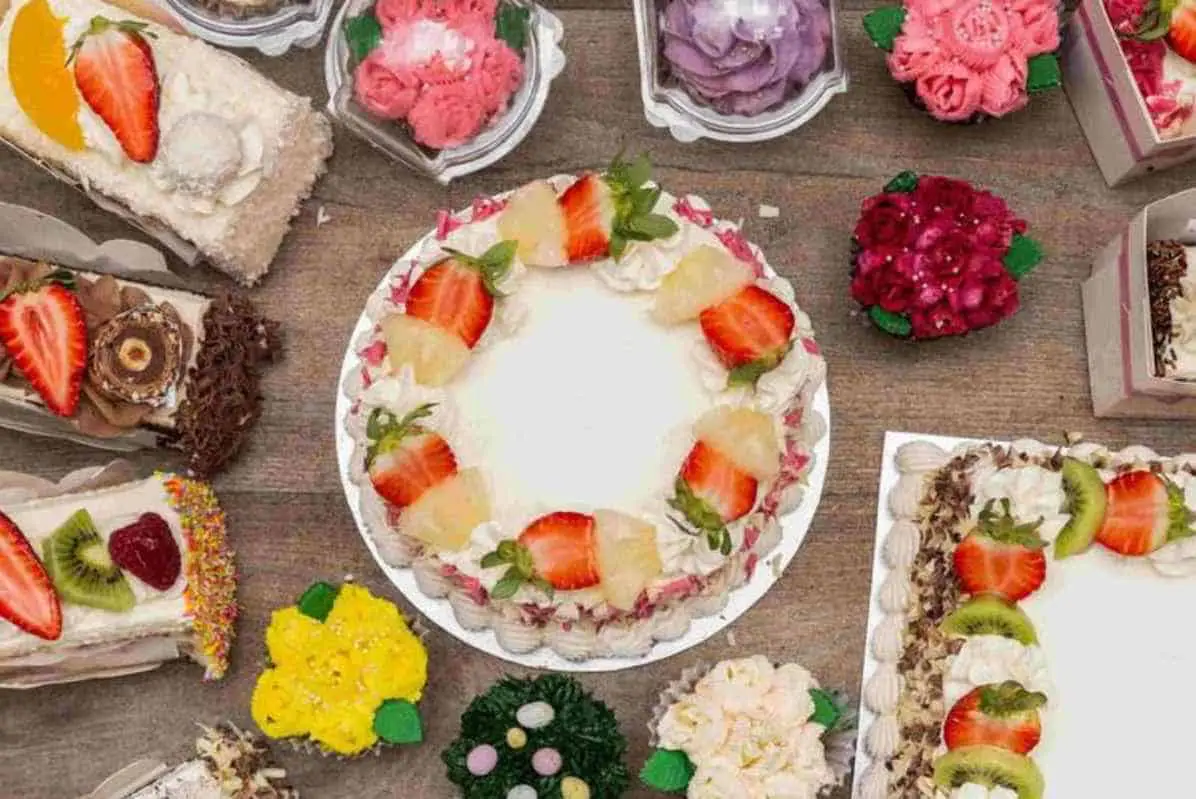
The cooling time of a cake depends on the type of cake and its ingredients. Generally speaking, cakes with basic recipes take about one to two hours to cool properly. Cakes that involve more complex techniques may require slightly longer times – up to four hours.
Keep in mind the larger the cake, the longer the cooling time. It is essential to follow the recipe instructions and let the cake cool completely before frosting or decorating it to achieve the best results.
Here are some of the most popular cakes and their approximate cooling time to give you a more precise context.
| Cake | Size | Cooling Method | Approximate Cooling Time |
| Loaf Cake | 9-inch | Room Temperature | 2-3 hrs |
| Chiffon Cake | 10-inch | Upside Down | 2-3 hrs |
| Sponge Cake | 8-inch | Room Temperature | 2 hrs |
| Chocolate Cake | 8-inch | Room Temperature | 2 hrs |
| Pound Cake | 9-inch | Room Temperature | 2 hrs |
| Fruit Cake | 9-inch | Room Temperature | 2-3 hrs |
| Cheesecake | 9-inch | Refrigerator | 4 hrs minimum |
| Bundt Cake | 10-inch | Room Temperature | 2-3 hrs |
| Angel Food Cake | 10-inch | Upside Down | 2-3 hrs |
| Carrot Cake | 8-inch | Room Temperature | 2 hrs |
If you want to speed up the cooling process, you can put the cake in the refrigerator or freezer. However, keep in mind that doing so can affect the texture and moisture of the cakes, so it is best to cool them at room temperature.
Removing the Cake from the Pan
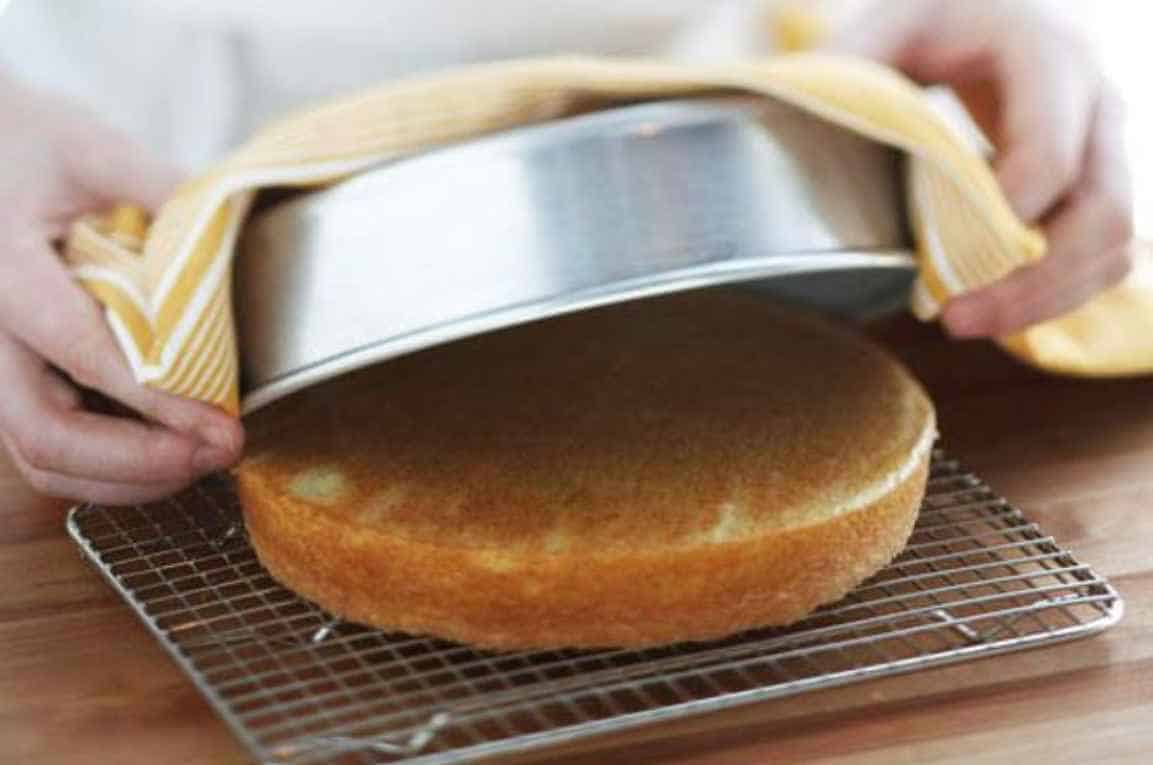
After baking a cake, one of the most important things is to take it out of the pan. If your cake adheres to the pan or falls apart when you try to remove it, all your hard work will have been for naught.
Hence, to guarantee that your cakes always turn out beautifully, here are some strategies for removing them from the pan.
- Let the cake cool down first: The cake must cool entirely in the pan before you remove it. Removing a warm cake from the pan makes it more likely to shatter or crumble. The cake will solidify and stiffen when allowed to cool to room temperature, making handling simpler.
- Use a knife to score the pan’s sides gently: When the cake has cooled thoroughly, you can remove it from the pan by running a knife or spatula around the outside. If you do this, the cake will be easier to remove from the pan.
- Turn the pot upside down on a plate or wire cooling rack: Invert the pan and wire rack together by placing the plate or rack on top of the pan. The cake should release easily from the pan and transfer to the serving dish or cooling rack without crumbling or tearing.
- Sound the pan’s base: Tap the bottom of the pan after inverting it to help the cake fall out. If the cake won’t release from the pan, shake it and tap on the counter. Avoid breaking or crumbling the cake by being patient and delicate when removing it from the pan.
- Use a spatula: If any part of the cake remains in the pan, loosen it with a spatula. Be careful not to apply too much pressure, which can cause the cake to shatter or crumble.
- Please wait while the cake cools: Remove the cake from the pan and place it on a plate or wire rack to cool entirely before decorating or serving. The frosting will then be less likely to melt or slide off.
Initial Cooling Process
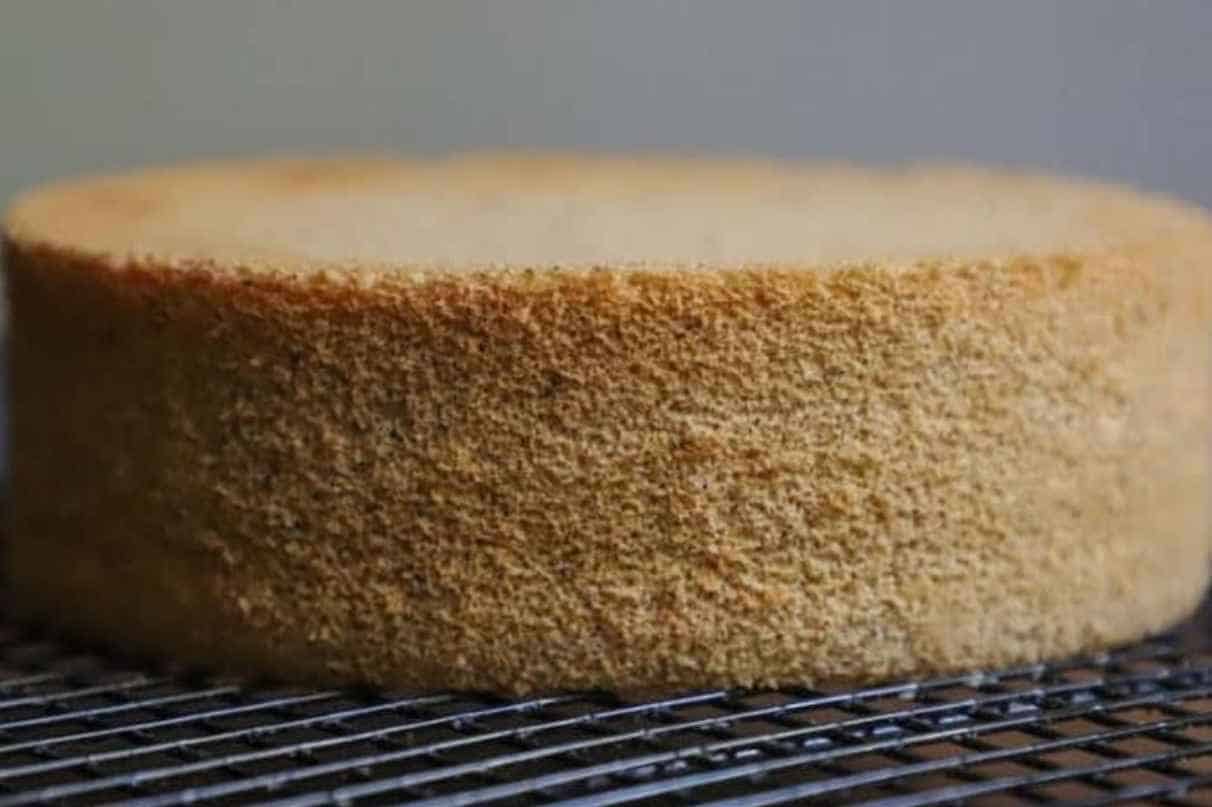
There are a few reasons why a cake needs to go through the initial chilling process. First, it gives the cake time to set and become more solid, making it simpler to handle and decorate when completed. Holding or decorating a cake while it is still warm is likelier to crack or crumble.
Second, it is important to let the cake cool to room temperature before applying the frosting so it does not melt or slide off the cake. If the cake is still warm when you frost it, the icing will melt and slide off it, making it look terrible.
The next step is to bring the cake’s temperature down to room temperature, allowing its flavor and texture to mature to their maximum potential. Cakes consumed while they are still warm have the potential to have a distinct flavor and texture compared to cakes that have been allowed to cool to room temperature.
Cooling the Cake Completely
When it comes to cooling a cake, one of the essential steps is ensuring that you completely cool down the cake before applying frosting or decorating it.
If you let the cake become too warm, the icing may melt or become overly soft, resulting in a less visually pleasing end product. Thus, make sure you completely cool it down first.
Signs That the Cake is Ready for Frosting or Decorating
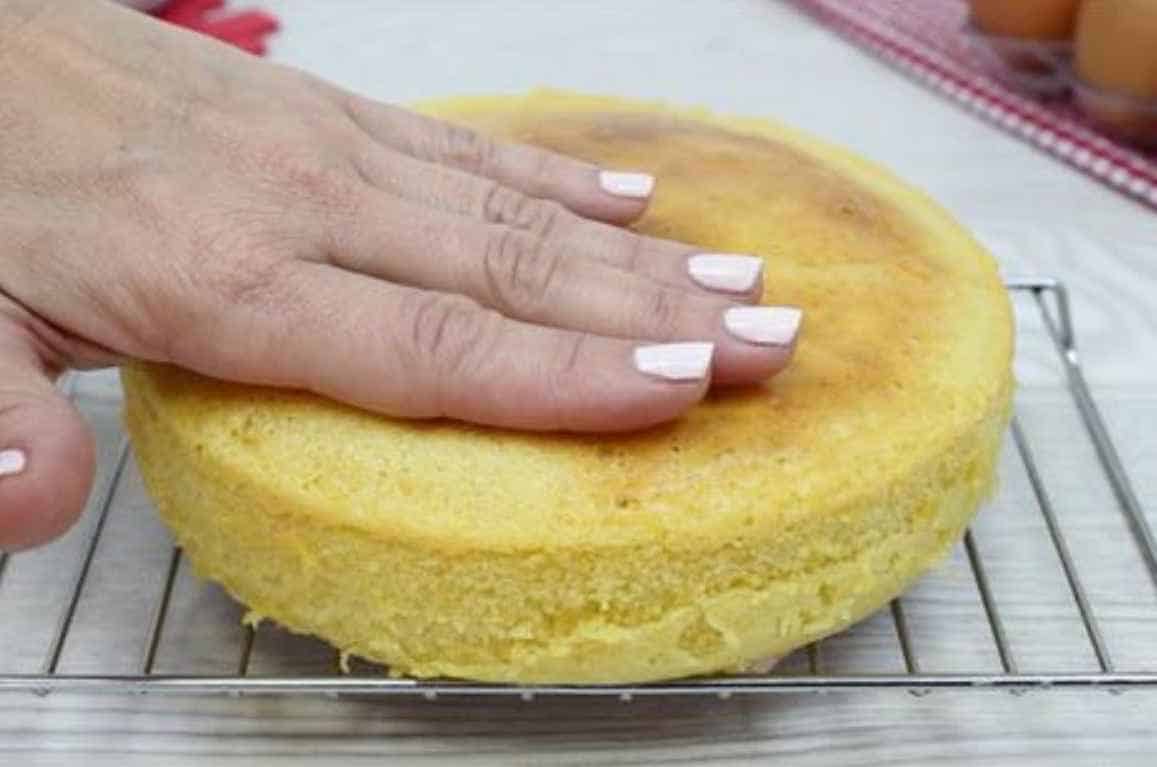
Knowing when a cake is ready for frosting or decorating is vital to creating a delicious and visually appealing dessert. Here are some signs to look for:
- Touch: Gently press the top of the cake with your finger. If it springs back, it’s ready for frosting. But if it doesn’t, it needs more time.
- Color: The edges of the cake should be golden brown, and the center should be light and fluffy.
- Clean toothpick: Insert a toothpick into the center of the cake. If it comes out clean, the cake is ready. If it has batter on it, it needs more time.
- Pulling away from the edges: The cake should start pulling away from the pan’s sides.
Handling a Cake That is Still Warm
There are a few things to remember when working with a cake that is still warm if you are in a hurry and need to cool the cake swiftly.
Place the cake in the fridge or freezer for a few minutes to hasten it to room temperature. But, avoid freezing the cake completely to avoid the frosting becoming challenging to spread and firm. It will prevent the frosting from becoming brittle.
Tips for Preventing Common Cake Cooling Issues
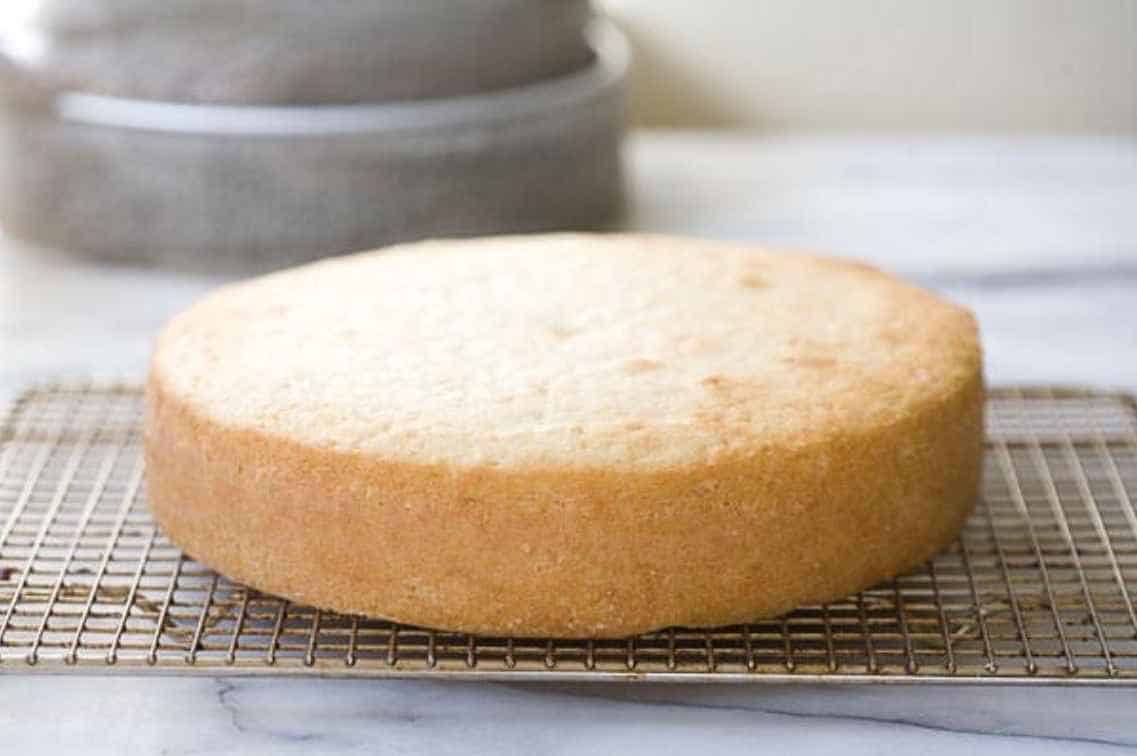
The final stage in making a cake is allowing it to cool, which is vital. Inadequate cooling can cause various problems, each of which can affect the end product. To help you, we will go over some of the most typical issues when cooling cakes and possible solutions to these problems.
Soggy Bottoms
If you put a hot cake down on a tabletop or some other surface directly, you risk the bottom of the cake becoming soggy. To avoid this problem, you should cool your cake on a wire rack, to prevent this problem. The cake will cool more uniformly if placed on the wire rack because it allows air to move freely around it.
Cracked or Broken Cakes
Cakes have a greater risk of cracking if they are allowed to cool at an excessively rapid rate or if subjected to a sudden shift in temperature. Before transferring your cake to the refrigerator or freezer, allow it to cool slowly at room temperature to avoid this problem.
Uneven or Domed Tops
You may bake your cake unevenly if it has a dome on top or if the height is uneven across the surface. It could result from several factors, including improper mixing, an oven that is too hot, or a pan that is too full.
If you do not want this to occur, make sure that you use a pan that is the appropriate size and follow the directions in your recipe correctly.
Conclusion
Cooling your cake is an essential step in baking that can affect your final texture and taste. By following these tips and tricks on how to cool cake, you can ensure that your cake turns out perfectly. You no longer have to worry about serving your guests an unappetizing cake.
